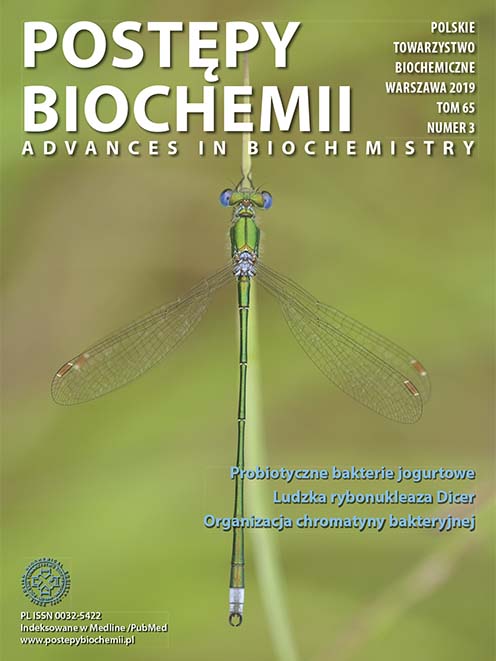Molecular mechanisms involved in bacterial chromatin organization
DOI:
https://doi.org/10.18388/pb.2019_270Abstract
Advances in high resolution microscopy techniques and development of high throughput DNA analyses allow to reconsider the views concerning bacterial chromosome (nucleoid). Recent reports show that nucleoid exhibits a hierarchical organization, similarly to the eukaryotic chromatin. However, bacterial chromosome undergoes constant modifications and topological rearrangements due to the ongoing DNA replication, transcription and translation processes. Organization of dynamic and highly compacted nucleoid structure depends on physical factors acting on chromosome molecule inside small cell compartment, and is a consequence of action of many different DNA-binding proteins. The main goal of this review is to present the recent reports on bacterial chromatin structure and to elucidate the physical and molecular factors influencing its intracellular organization.
Downloads
Published
Issue
Section
License
All journal contents are distributed under the Creative Commons Attribution-ShareAlike 4.0 International (CC BY-SA 4.0) license. Everybody may use the content following terms: Attribution — You must give appropriate credit, provide a link to the license, and indicate if changes were made, ShareAlike — If you remix, transform, or build upon the material, you must distribute your contributions under the same license as the original. There are no additional restrictions — You may not apply legal terms or technological measures that legally restrict others from doing anything the license permits.
Copyright for all published papers © stays with the authors.
Copyright for the journal: © Polish Biochemical Society.




